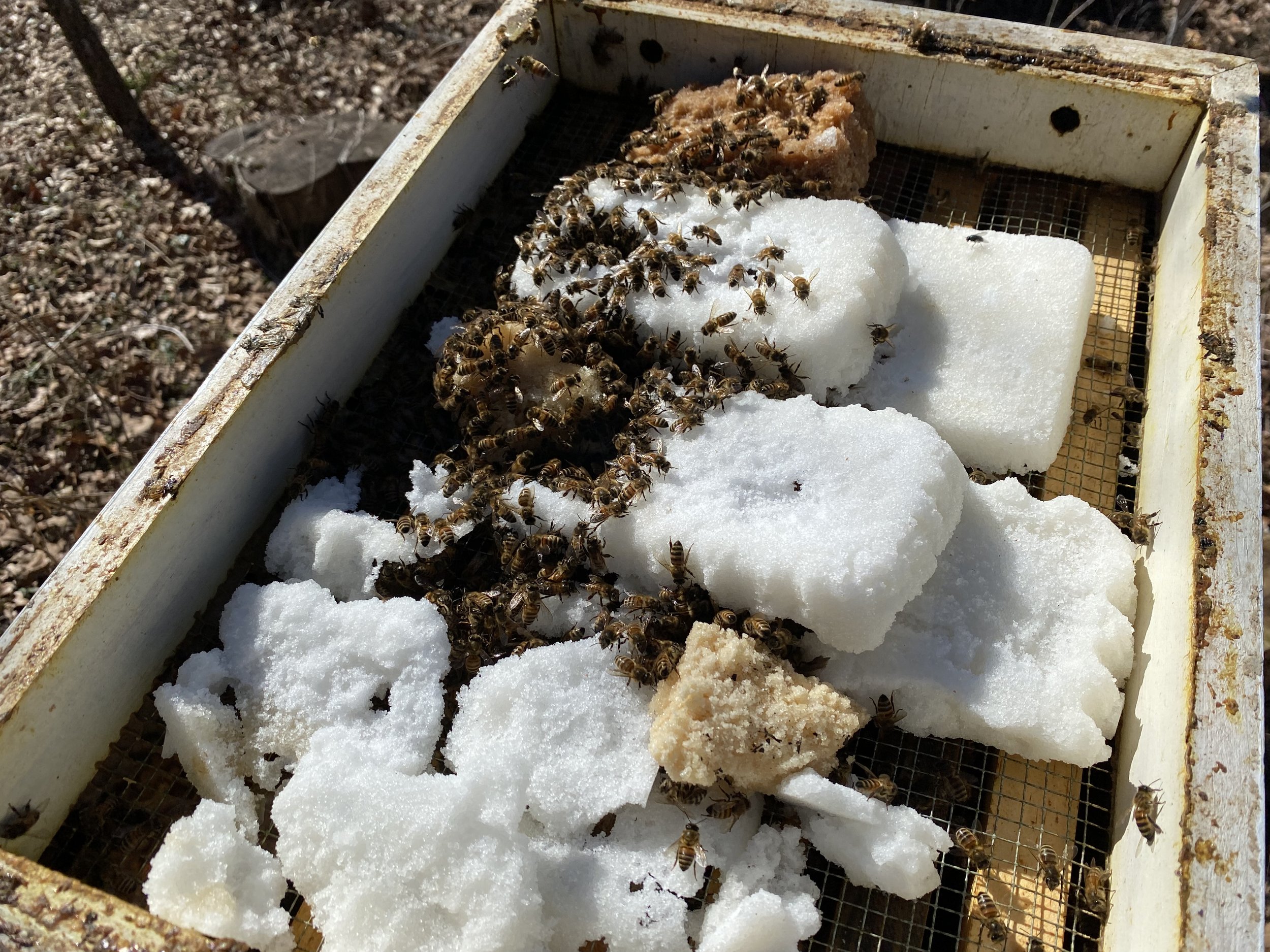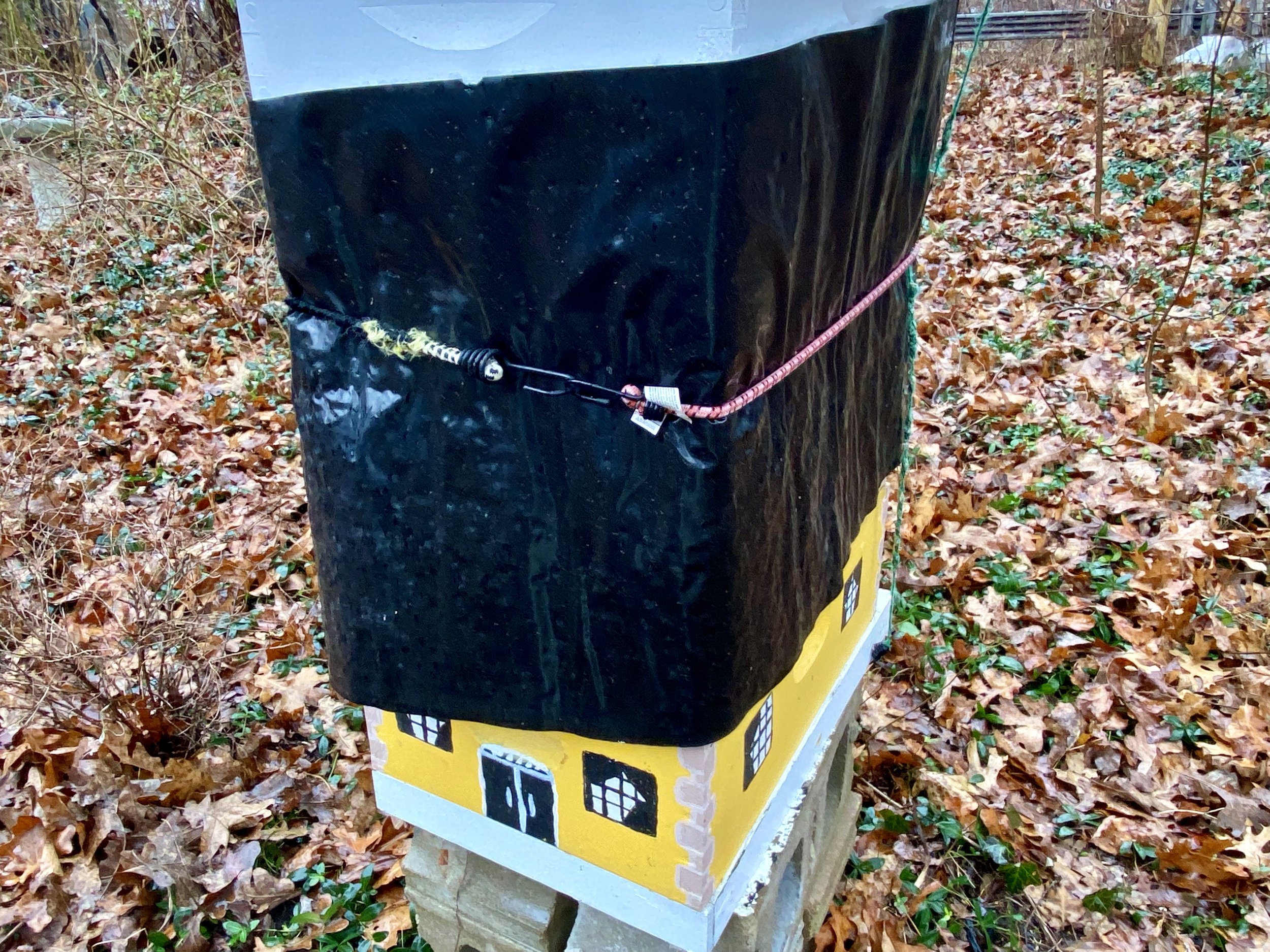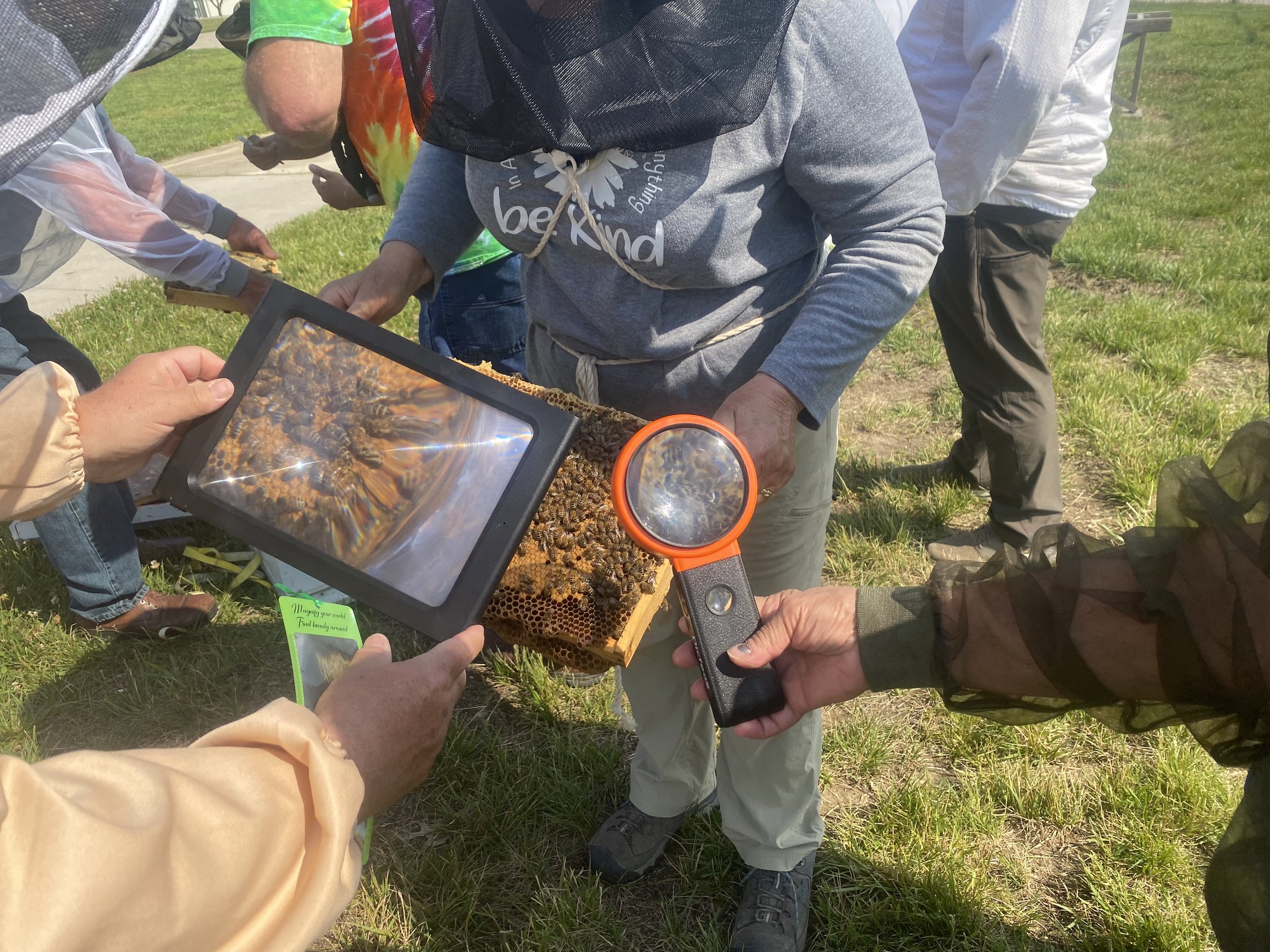Honey Moisture Content
One of the more challenging tools beekeepers use is a “re-frak-TOH-me-ter” which measures the moisture content of honey. There are many available models, all differently measuring honey moisture.Read directions since they all operate just a little differently.
Honey differs in color, taste and content from hive to hive, even from frame to frame and cell to cell. After bees collect and store flower nectar, they use their wings to dehydrate the nectar to between 14-20%.
Honey that sits for a while will have a different moisture content at the surface than at the bottom. Depending on when the honey is extracted, it can also have a different moisture content. Over a 18.6 reading, honey may ferment. If the moisture content is greater than 20%, honey will ferment due to yeasts in the honey. Since honey is hygroscopic, if it is not in a sealed container, it will attract moisture from the air.
According to Virginia Beekeepers. org, here’s how this little gadget works. Light travels at different speeds through different materials. The refractive index is just a comparison between two numbers: the speed of light through a vacuum and the speed of light through the material you are testing such as honey.
Light also changes direction after it passes through different materials. If you measure the difference between the angle of light coming in)and the angle of refraction, light coming out, you can use this number to determine the refractive index. This is how a refractometer actually works.
If you look at a straw in a glass of water you will see it looks distorted. This is because light moves faster through just the glass than it does through the glass and the water combined. Likewise, light will move faster through honey that has few solids than it will move through honey that has many solids. In other words, the refractive index of honey will change based on the amount of solids such as sugars, pollen and other substances in it.
Refractometers also make corrections based on temperature, because the refractive index will change slightly as the temperature changes.
Now, to make this all the more perplexing, the amount of solids in a liquid is measured on a scale called the Brix scale. 1 degree Brix (written °Bx ) means 1 g of sucrose per 100 g of aqueous solution. When the solution consists solely of sucrose and water, this means that you can calculate the total volume of water present because 1 g of water has a volume of exactly 1 mL by definition. For example, a 100-mL solution measuring 10 °Bx contains 90 mL of water, since the total mass of the solution is 100 g, 10 g of which is by sucrose and 90 g of which therefore must consist of water.
The Brix of honey can be from about 70 to 88.
Now here is where confusion sets in. While most refractometers give a reading in Brix (solids in water), honey refractometers give readings of water in honey. This is the opposite of Brix. This type of reading is used in honey refractometers, so beekeepers don’t have to subtract the Brix reading from 100 to get the moisture level. It’s just a convenience. However, it can get really confusing when a beekeeper uses a refractometer designed for another purpose—such as brewing. Not only are these designed to be most accurate in other ranges, the readings are in Brix—not 100 minus Brix. It is best to use a refractometer for measuring honey moisture content.
Refractometers are usually sold with the recommended oil to calibrate the device. If not, you can buy the recommended oil.






















































